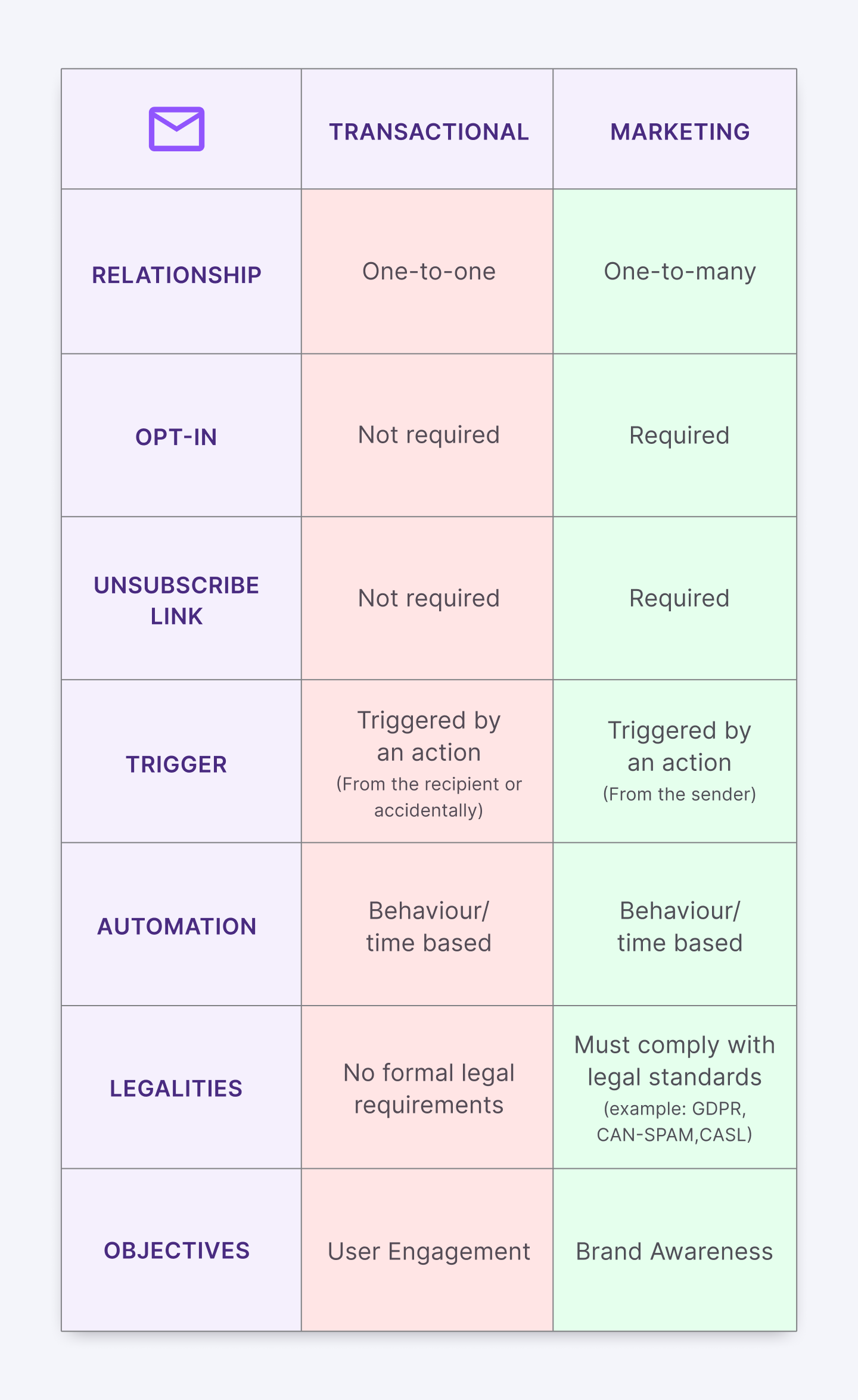Transactional and marketing messaging can be a tad bit confusing to differentiate sometimes, but some clarity will help you realize it’s actually pretty straightforward. In this post, we dwell on what makes each of these a crucial step for your business, especially if you are available in the digital world.
What are transactional messages?
Transactional messages are those that are triggered by an action done by your user. These messages (be it through any channel) are automated, and unique to every user since it’s extremely journey based. The delivery speed here becomes extremely crucial since most events are time-bound. Transactional doesn’t relate only to banking transactions or anything to do with money, but rather that it has to do with informational messaging with the user based on the events they choose to trigger .
Some of the most common use cases of transactional messages:
- Order and shipping confirmations
- Update on order status
- Payment confirmations and invoices
- Reminder to make payments/subscriptions
- Creating a new account
- Welcome emails
- Password change or recovery
- Cart abandonment
- Security alerts
- System updates
- OTPs
- 2-factor authentication
What are marketing messages?
On the other hand, marketing messages are for commercial purposes, sent to many at once, with a generic promotional message. Unlike transactional messages, promotional messages need the user to opt-in to receive them. Marketing messages don’t come with a sense of urgency, and hence see a much lesser open rate than transactional messages across channels. They are not triggered by any event but could be a part of campaigns that the brand chooses to run. Marketing messages also come with the option to unsubscribe.
Some of the most common use cases of marketing messages:
- Email newsletters
- Promotions, deals and offers
- Product announcements and upgrades
- Cross-selling
- Announcements or invitations
- Discounts
- Referrals
- Event Invitations
This distinction is seen most in emails, considering it has the best ROI and many choose this channel to communicate with their users, especially for their promotional and marketing needs.
Should you separate marketing and transactional messaging?
Well, it’s ideal if you do. It might seem like a tedious process at first to segregate messaging between transactional and marketing, but you stand to gain quite a bit once you are done.
- Domain reputation: Circling back to emails, a really critical aspect to pay attention to is domain reputation and whether emails don’t end up in spam. Creating sub-domains for transactional and marketing will ensure that the two don’t clash and create an issue for the domain. Usually, when bulk emails are sent, providers flag them down. Marketing emails might be sent in bulk, thereby affecting transactional messages, which are far more important and time-sensitive.
- Better deliverability: Separating transactional from marketing requires separate domain maintenance, which means that the deliverability for both cohorts will be higher. On the flip side, if, for any reason, a marketing campaign did not rake in positive numbers, then it doesn’t have any bearing on the transactional messages going out either.
- Improving customer experience: For the end user, transactional emails might take up a higher priority than marketing. If the two aren’t kept separate, then an overlap might lead to a disgruntled experience for the customer. For example, if a user was looking to reset their password, and the email ends up in the promotions folder on Gmail because it wasn’t correctly differentiated, then the user might not be able to locate it, leading to chaos. Whereas if the distinction had been clear, the password reset message will land in the primary inbox, quickly solving the issue for the user. This leads to a good user experience and eventually also extends to brand loyalty.

In conclusion,
Both transactional and marketing are extremely important in different ways and add value to the business. It’s also very valuable to the business to focus on both individually, and together, such that ultimately, the end user’s experience is kept in mind.
At Fyno, you can easily trigger all your transactional notifications across channels. Looking to get started? Speak to us for an expert consultation to understand how we can help scale your business.
See you in the next,
Team Fyno


